Khorog
Khorog - Capital of Pamir
Khorog is the largest town of its region and is therefore attracting people from far and wide to its well-stocked bazaars, supermarkets and teahouses. It is the main hub of Pamir where you finally enjoy a good wifi connection, a regular meal and a comfy night’s rest before or after the emptiness of the Pamir plateau. It is a great place to recharge from the long journey and organizing oneself for the travels to come.
The town of Khorugh, also known as Horog, Khoroq, Khorogh, Khorog, or Xoroq is the capital of the Gorno-Badakhshan (Tajik: Kuhistoni Badakhshon, “Mountainous Badakhshan”) Autonomous Province (GBAO) in Tajikistan. It is also the capital of the Shughnon District of Gorno-Badakhshan. Khorog stands at 2200 meters above sea level and is home to about 30 000 people, mainly comprised by the local Pamiri ethnic group. The city is settled at the bottom of a deep canyon, surrounded by cliffs and at the junction of the Pyanj, Gunt, and Shakhdara rivers. In addition, Khorog is just next to the border from Afghanistan and the Pamir Highway runs through the center of the town. Khorog is a part of most of our Tajikistan tours.
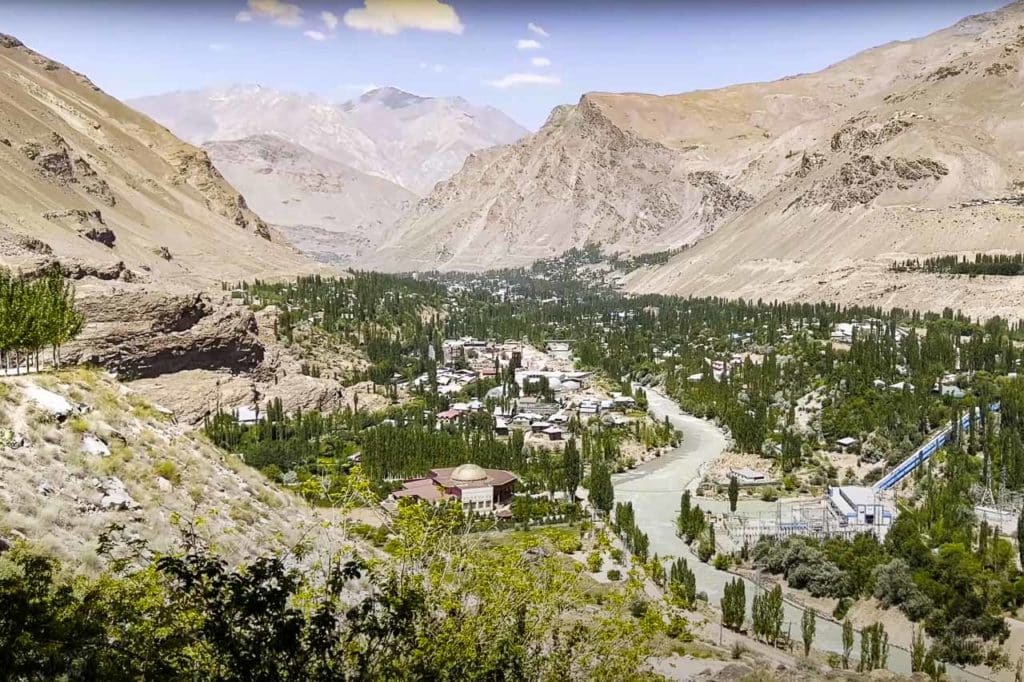
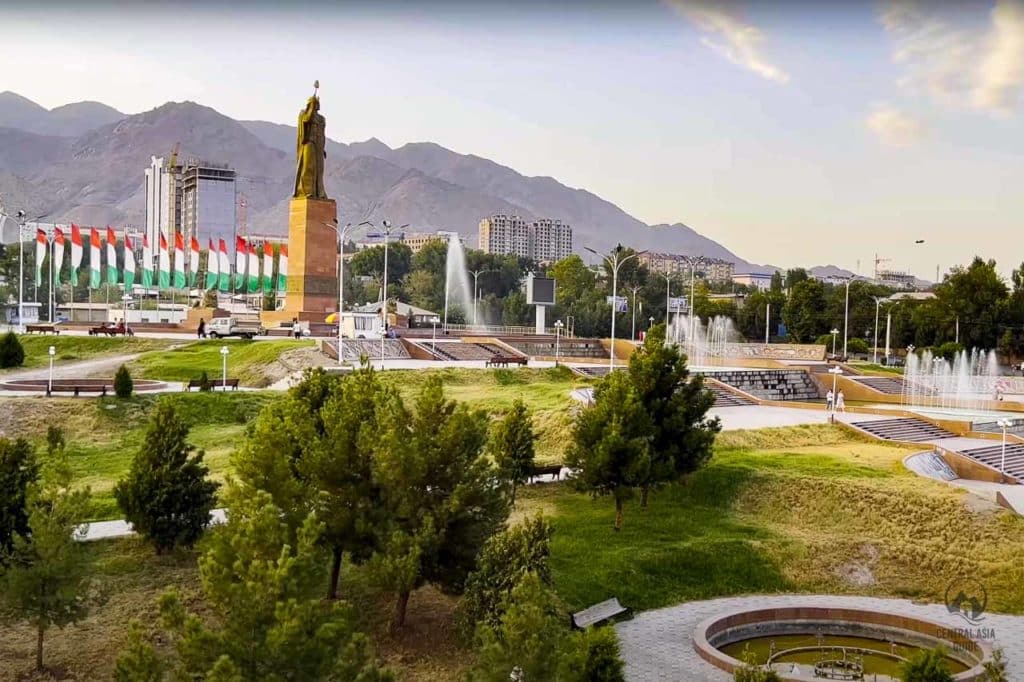
Khorog is known for its beautiful poplar trees that dominate the flora of the city. Although the town is relatively poor and suffered a decline during the 1990s, in recent years, several new hotels and guesthouses, internet cafes, and restaurants featuring Tajik cuisine have appeared here. The city is experiencing a major renovation and is peaceful and quiet.
Foreign aid organizations are quite active in the city’s development, particularly the Aga Khan Foundation, the UN and EU development programs. The number of travelers reaching Khorog during the visit to the Pamir highway has increased but it can be hardly still said that Khorog would be a well known destination to visit. The few visitors coming here still contribute towards the quality of life of the locals by bringing more money to the local economy.
Tours to Khorog
History of Khorog
There is no exact data about the origin of the history of Khorog. It is known that in this mountainous region was once a tiny state called Shungan that consisted of several fortresses spread around the mountains. One of them was called Kalai-Panjbar and was located at the intersection of rivers Gunt and Panj, precisely in the place of the present Khorog.
In the 19th century, this state fell under the rule of the Bukhara Khanate and in 1896 the territory was taken by troops of the Russian Empire. During the “Great Game” between Russia and Great Britain, Russians tried to get control of Pamir and for this reason built a road from Osh to Sary-Tash, then to Murghab, and finally to Khorog.
They established a frontier post on the banks of river Panj and the small village of Khorog started to develop. At the beginning of the 20th century, with the arrival of the Soviet rule, Khorog became an administrative center of the Gorno-Badakhshan autonomy and in 1928, it received the status of a city. During the 20th century, it was a trading point on the Pamir Highway and still serves as such till today.
Khorog Sights
Cuddled in a striking landscape, Khorog is the regional center for administration, trade, transportation, and particularly for education. The city still operates several Soviet-era plants for milk, meat and bread production. In addition, several Soviet built factories for manufacturing shoes and building materials are still operational here.
Khorog is home to 2 universities: University of Central Asia (by Aga Khan foundation) and the Khorog State University. If you spend some time in this town, you will most likely eventually meet some English speaking young residents due to the universities, which is a rarity elsewhere in Pamir. Architecture in the city resembles a typical Central Asian mixture of traditional Pamir houses and Soviet-style buildings. Although the center of town (along the Pamir Highway) is absolutely Soviet and rather ordinary.
Khorog has are many unique and charming Tajik homes are built terrace-like on the river and into the hillsides above the town. Khorog is relatively compact town, so you can see it easily in a day by walking. Botanical Garden is possibly the most famous attraction in the city. It was founded in the middle of the 20th century to study and experiment the survival of numerous types of plants in this high mountainous climate.
Khorog Central Park
Khorog City Park is settled in the central part of the town, on Davronov Street and it is a perfect place to relax and enjoy the cool evening breeze during the wam summer period. Inside the Central Park you will find the Chorbogh restaurant, an open area theatre, public swimming pool, and playgrounds for children and the Tourist Information Center. In the summertime, the park hosts a multi-cultural musical festival and various types of other exhibitions.
Khorog Botanical Garden
The Khorog Botanical garden sits on the southeast end of Khorog, on a hill and offers a great view over the town. According to the Guinness book of World Records, Khorog Botanic Garden is the highest botanical garden in the world but according to other sources it is considered the second-highest after the Botanic Garden in the Nepal. Founded in 1940 by Ilaria Raikova, it has numerous species and varieties of flora. Recently visitors have been reporting the condition of the garden being neglected. You can get there taking local marshrutka from the town and the entrance is free of charge.
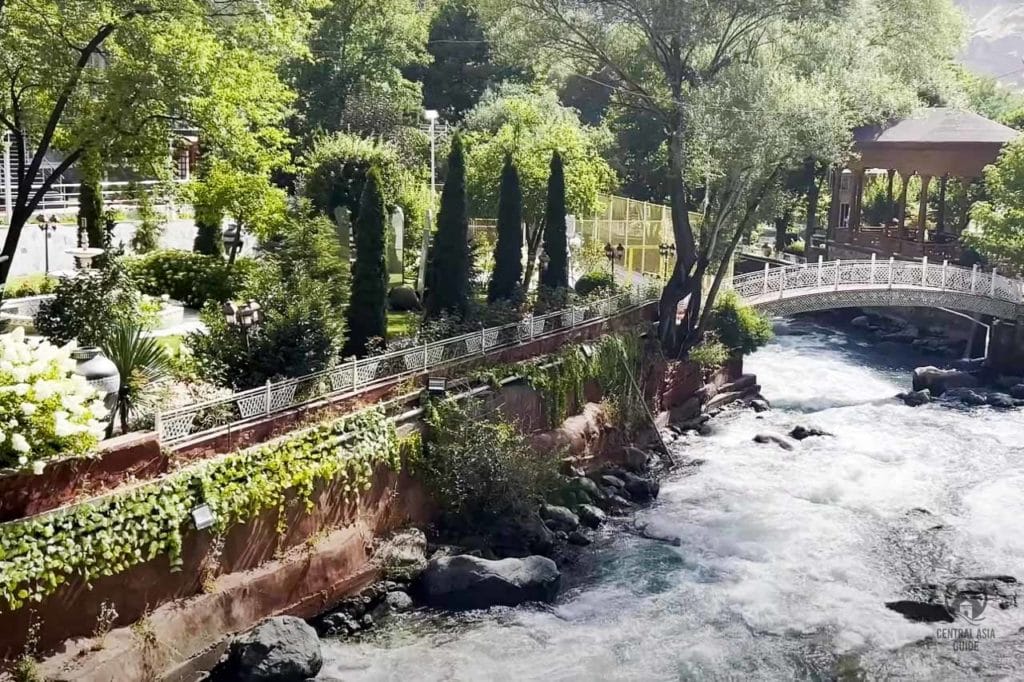
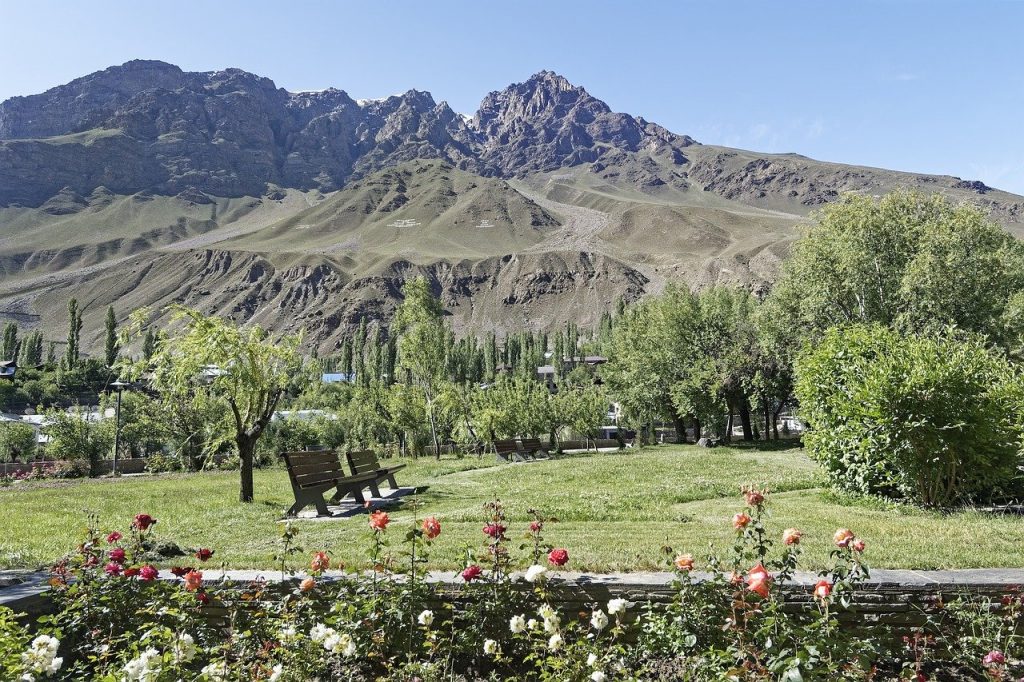
Khorog Museum
Khorog museum lies on Lenin Street and presents local historical and archeological collections. If you are seeking to get to know the local culture you should certainly visit it. You can learn about the local lifestyle at different periods from the ancestor’s time till today. Unfortunately, information displayed only Russian and Tajik.
Khorog Bazaar
Perhaps the most active place in the town is the Saturday Bazaar. It stands on the Khorog Afgan-Tajik (Tem-Demogan Border Crossing). It is a typical Central Asian bazaar where the stalls are shaded by colorful umbrellas. You can find plenty of woolly crafts here, including traditional socks and some Pamir style fabrics. Afgan merchants also come to sell food, clothing and handicrafts in Khorog. The bazar opening times are often erratic as it frequently closes due to border issues so it is best to check beforehand in the Tourism information center in town.
Khorog PECTA office
Next to the central part is the office of PECTA (Pamir Eco-Culture Tourism Association). Here you can get up to date information and they assist you with a further travel plan. For instance offer transportation, enquire about the hiking trails as well as give advice regarding the safety for those who are considering cross the river and pursue to Afganistan side. In addition, here you can get permits to Zorkul natural reserve and also purchase some souvenirs, get a free wifi and some coffee, which is not often available in Pamir.
Visit Khorog
Major transportation routes in GBAO run through or are reached, via Khorog. For instance, the Pamir highway north to Dushanbe and east to the town of Murghab, China and Kyrgyzstan (Alay Valley & Osh) all pass through Khorog. A dirt road goes along the Wakhan valley to Alichur village and another rough route to east along the Shakhdara Valley to peaks Karl Marx and Engels. The distance between Khorog and Dushanbe is 525 km through the fairly good road, taking about 12-14 hours.
You can get to Khorog by the shared taxis and minibus from other cities as well in addition to Dushanbe. From Khorog you can get further to Ishkashem in the south, Alichur village and Murghab in the east. Journeys to further destinations may require hiring a 4WD jeep or van (UAZ), which is also more expensive. Furthermore, Khorog owns a small airport, accessible by small propeller-driven aircraft, but currently there are no regular flights to Dushanbe or other cities. It is the only regularly used airport in GBAO. The only feasible options for tourists to enter Pamir is by the irregular helicopter rides.
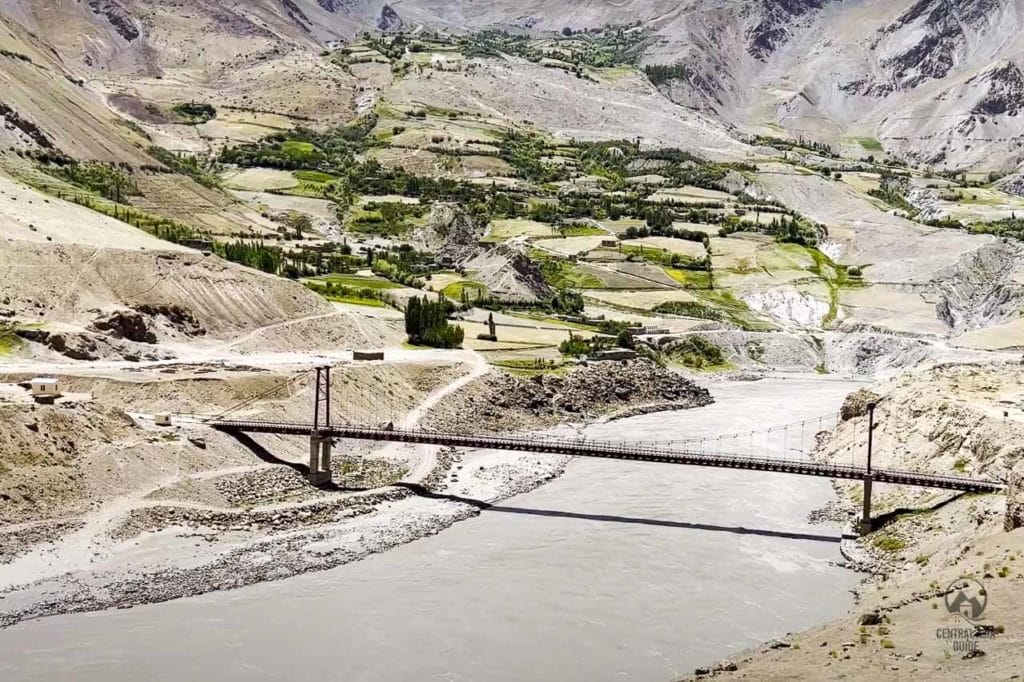
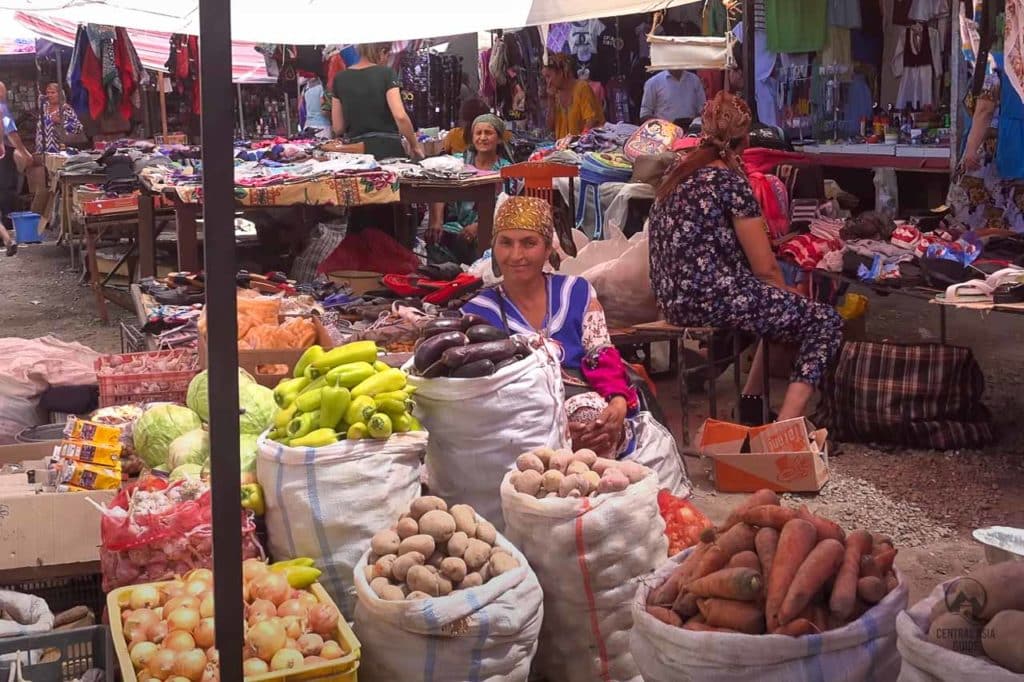
Sights & destinations near Khorog
Page updated 15.3.2023
